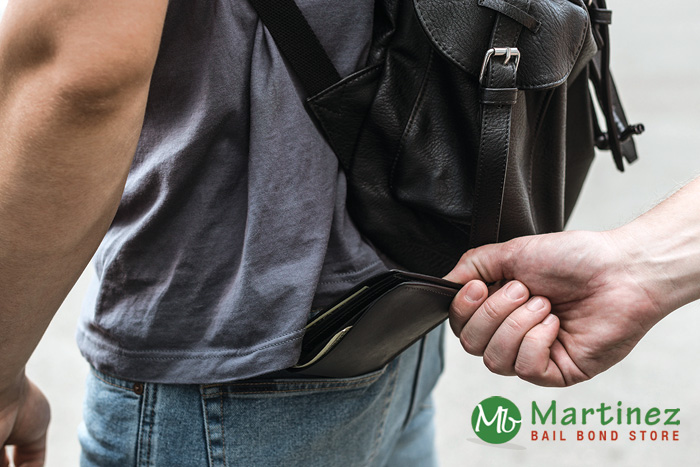Larceny is the basic crime of theft in California. It is among the various crimes identified in California’s Penal Code, including larceny, robbery, burglary, carjacking, embezzlement, fraud and identity theft, that relate to the illegal act of stealing.
Larceny is one of the most frequently seen charges in the California court system. The term larceny is a blanket word that’s used for a variety of different thefts. Larceny is used for:
- Robberies
- Carjackings
- Embezzlement
- Burglaries
- Fraud
- Identity thefts
- Muggings
- Pickpocketing
Most larceny cases are commonly referred to as grand theft or petty theft.
Since there are so many different types of larceny in California, each case is handled differently. The first thing that happens right before a larceny arrest is the prosecutor deciding which type of larceny the suspect allegedly committed and if they should pursue felony or misdemeanor charges.
Most of California’s larceny charges are wobbler offenses, meaning that they can be handled either as a misdemeanor or a felony. The two major determining factors are the value of the theft and if anyone was injured during the incident.
There’s a major difference in the long-term impact a misdemeanor and a felony will have on your life. Yes, both result in a criminal record, but most of the time a misdemeanor won’t be a major issue whereas a felony can make it difficult to find a job, qualify for housing and legally own a gun. Getting convicted of misdemeanor grand theft also means a shorter and softer sentence. The sentence for misdemeanor grand theft is a year in a county jail. If you’re convicted of felony grand theft, the sentence is 16 months, 2 years or 3 years in a state prison.
If a firearm is involved in a larceny case, the charges will always be handled as a felony. It’s important to note that people seldom face a single larceny charge. In many cases, additional charges are included. Each of these separate charges will likely impact the severity of your sentence.

